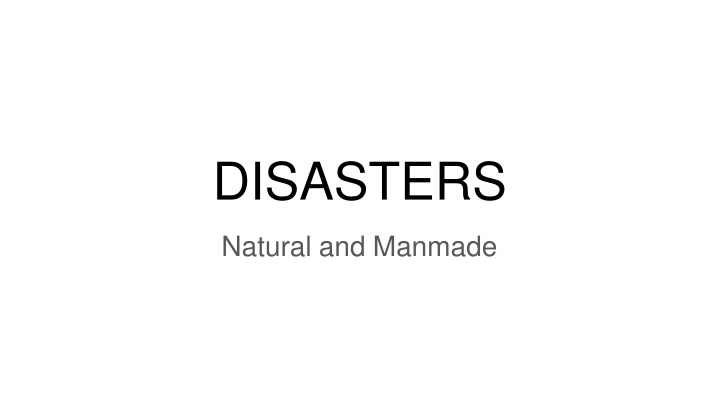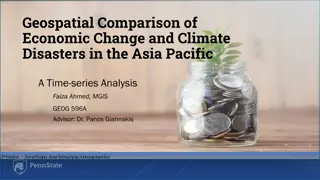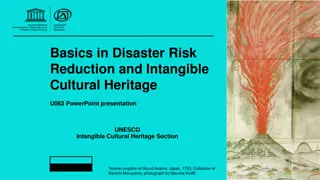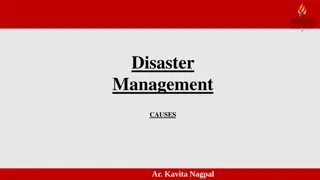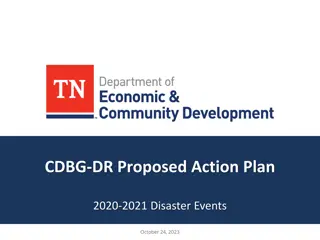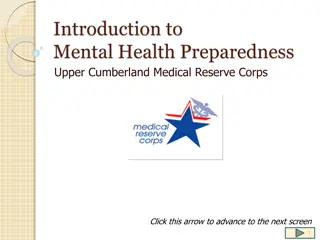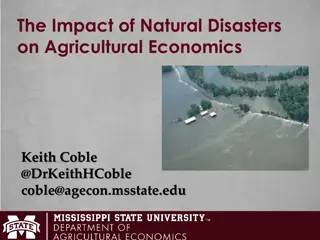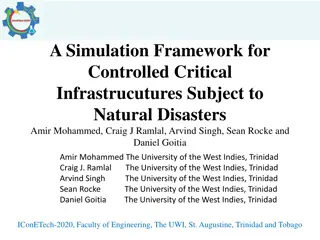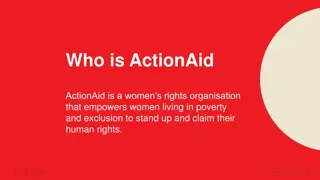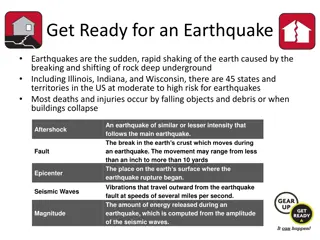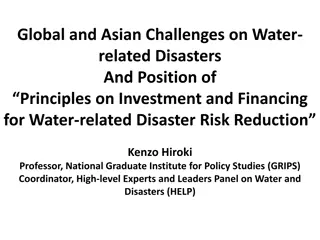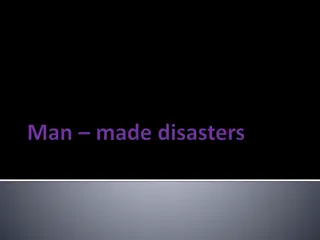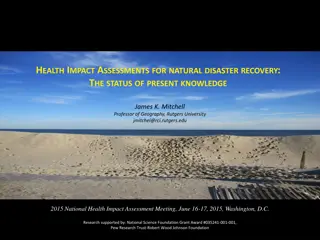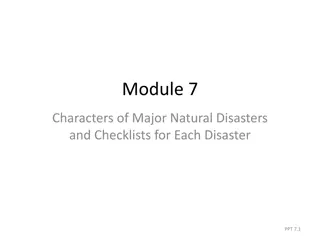DISASTERS
Natural disasters, such as hurricanes and wildfires, alongside manmade disasters like the Bhopal gas tragedy and Chernobyl nuclear accident, are explored, highlighting the Chipko Andolan movement and Save Silent Valley initiative in India. The Bishnoi faith's environmental stewardship principles are also discussed.
Uploaded on Feb 17, 2025 | 3 Views
Download Presentation

Please find below an Image/Link to download the presentation.
The content on the website is provided AS IS for your information and personal use only. It may not be sold, licensed, or shared on other websites without obtaining consent from the author.If you encounter any issues during the download, it is possible that the publisher has removed the file from their server.
You are allowed to download the files provided on this website for personal or commercial use, subject to the condition that they are used lawfully. All files are the property of their respective owners.
The content on the website is provided AS IS for your information and personal use only. It may not be sold, licensed, or shared on other websites without obtaining consent from the author.
E N D
Presentation Transcript
DISASTERS Natural and Manmade
Natural Disasters A natural disaster is characterized by the abnormal intensity of a natural agent (flood, mudslide, earthquake, avalanche, drought) when the usual measures to be taken to prevent this damage were not able to prevent their emergence or were not able to be taken. Hurricanes and tropical storms. Landslides & debris flow. Thunderstormsand lighting. Tornadoes. Tsunamis. Wildfire. Winter and ice storms. Sinkholes.
Man made Disasters The Bhopal disaster, also referred to as the Bhopal gas tragedy, was a gas leak incident on the night of 2 3 December 1984 at the Union Carbide in Bhopal, Madhya Pradesh, India.It is considered among the world's worst industrial disasters. Over 500,000 people were exposed to methyl isocyanate (MIC) gas. The Chernobyl disaster was a nuclear accident that occurred on Saturday 26 April 1986, at the No. 4 reactor in the Chernobyl Nuclear Power Plant, near the city of Pripyat in the north of the Ukrainian SSR in the Soviet Union. The Fukushima Daiichi nuclear disaster was a 2011 nuclear accident at the Fukushima Daiichi Nuclear Power Plant in kuma, Fukushima Prefecture, Japan. The event was primarily caused by the 2011 T hoku earthquake and tsunami.
CHIPKO ANDOLAN The Chipko movement or chipko andolan, was a forest conservation movement in India. It began in 1973 in Uttarakhand, then a part of Uttar Pradesh (at the foothills of Himalayas) and went on to become a rallying point for many future environmental movements all over the world. It created a precedent for starting nonviolent protest in India.[1]However, it was Sunderlal Bahuguna, a Gandhian activist, who gave the movement a proper direction and its success meant that the world immediately took notice of this non-violent movement, which was to inspire in time many similar eco-groups by helping to slow down the rapid deforestation, expose vested interests, increase social awareness and the need to save trees, increase ecological awareness, and demonstrate the viability of people power.
Save Silent Valley Save Silent Valley was a social movement aimed at the protection of Silent Valley, an evergreen tropical forest in the Palakkad district of Kerala, India. It was started in 1973 by an NGO led by an NGO led by teachers and the Kerala Sastra Sahithya Parishad (KSSP) (KSSP) to save the Silent Valley from being flooded by a hydroelectric project. The valley was designated in 1985 as the Silent Valley National Park. Kuntipuzha is a major waterway 15 km southwest of the Silent Valley. Bhavani River, a tributary of Kaveri River, and Kunthipuzha River, a tributary of Bharathappuzha river, originate in the vicinity of Silent Valley. The Kadalundi River has also its origin in Silent Valley.
Bishnois Movement The Bishnoi faith is a religious offshoot of Hinduism founded on 29 principles, most of which promote environmental stewardship. Bishnois strictly forbid the harming of trees and animals. The religion was founded by Guru Maharaj Jambaji in 1485 AD in the Marwar (Jodhpur) desert region of western Rajasthan, India. Amrita Devi was a female villager who could not bear to witness the destruction of both her faith and the village's sacred trees. She decided to literally hug the trees, and encouraged others to do so too, proclaiming: A chopped head is cheaper than a felled tree. In memory of the 363 Bishnois, who died protecting their dear trees, a number of khejri trees are planted around the area, which is still notably lush and rich with animal life.
Narmada Bachao Andolan Narmada Bachao Andolan (NBA) is an Indian social movement spearheaded by native tribals (adivasis), farmers, environmentalists and human rights activists against a number of large dam projects across the Narmada River, which flows through the states of Gujarat, Madhya Pradesh and Maharashtra. The NBA, has its leading spokespersons Medha Patkar and Baba Amte Sardar Sarovar Dam in Gujarat is one of the biggest dams on the river and was one of the first focal points of the movement. Patkar's actions did force the World Bank to set up The Morse Commission, an independent review of the project. The World Bank's participation in these projects was canceled in 1993.
Big Dam Protest Movement The most successful anti-dam campaign in the United States was the Grand Canyon campaign against the 525 feet-high Eco Park dam on the Green River. The first struggle against dam-induced displacement took place in India in 1927 against the Mulshi Dam (hydroelectric project) located in western India, in the erstwhile Bombay Presidency (about 20 kms south-west of Poona). The movement against the construction of the Hirakud dam in Orissa.
